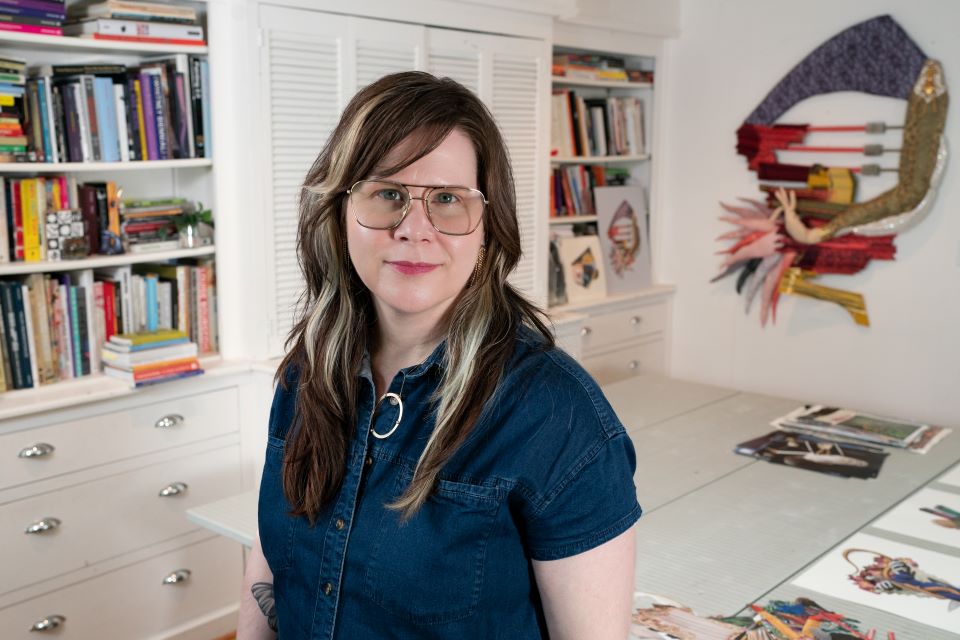Leslie Fandrich

Leslie Fandrich is a visual artist who makes work that draws from the traditions of both sculpture and painting, while utilizing machine and hand sewing, found textiles and objects and collage techniques. Her work has been exhibited at the Garrison Art Center in Garrison, New York; MassArt x SoWA Gallery in Boston, Massachusetts; the Rockland Center for the Arts in Nyack, New York; and PLUG Projects in Kansas City, Missouri.
Leslie has been awarded residencies and fellowships from Chashama's International Artists-in-Residence Program, Assets for Artists (The Studios at MASS MoCA) and the Chautauqua School of Art Summer Residency Program. She mentors artists in the Thrive Together Network and is a faculty member at Dutchess Community College. Leslie received an MFA from the Massachusetts College of Art and Design in Boston and a BFA from the Alberta College of Art + Design (nka Alberta University of the Arts) in Calgary, Canada. She lives in the Hudson Valley, New York, with her family.
Artist Statement
My feminist practice explores how intimate long term relationships negotiate dependency and agency and how dualities, when treated equally, can create a third, paradoxical space where multiple things can be true at the same time. I collect textiles and objects, transforming them into parts that become raw materials to create abstract compositions that are both familiar and strange. Machine sewing, hand-stitching and collage are processes that allow me to bring a variety of textures and materials together in unexpected ways. A collage sometimes acts as a blueprint for a larger textile sculpture that hangs on the wall. I want to connect the parts and create a sense of wholeness, but allow for space.
Abstraction is a potent tool of the unfamiliar, humor is deployed to surprise and delight and I am interested in confusing what is a subject or object to delve into the abject where meaning breaks down. Anatomy shared across genders, like tongues and limbs, hang or pile on the floor. Zippers are entrances and exits: mouths, vulvas, orifices and wounds. The work requires care, needing to be fluffed and stitched back together when holes form. Objects feel alive, like they want to be picked up or might walk away. In my work, fabric often becomes skin and the tactility of textures is seductive, but details that resemble hair or pimples repel the touch. The erotic and the grotesque intertwine, we are both attached and separate, and love is loss.